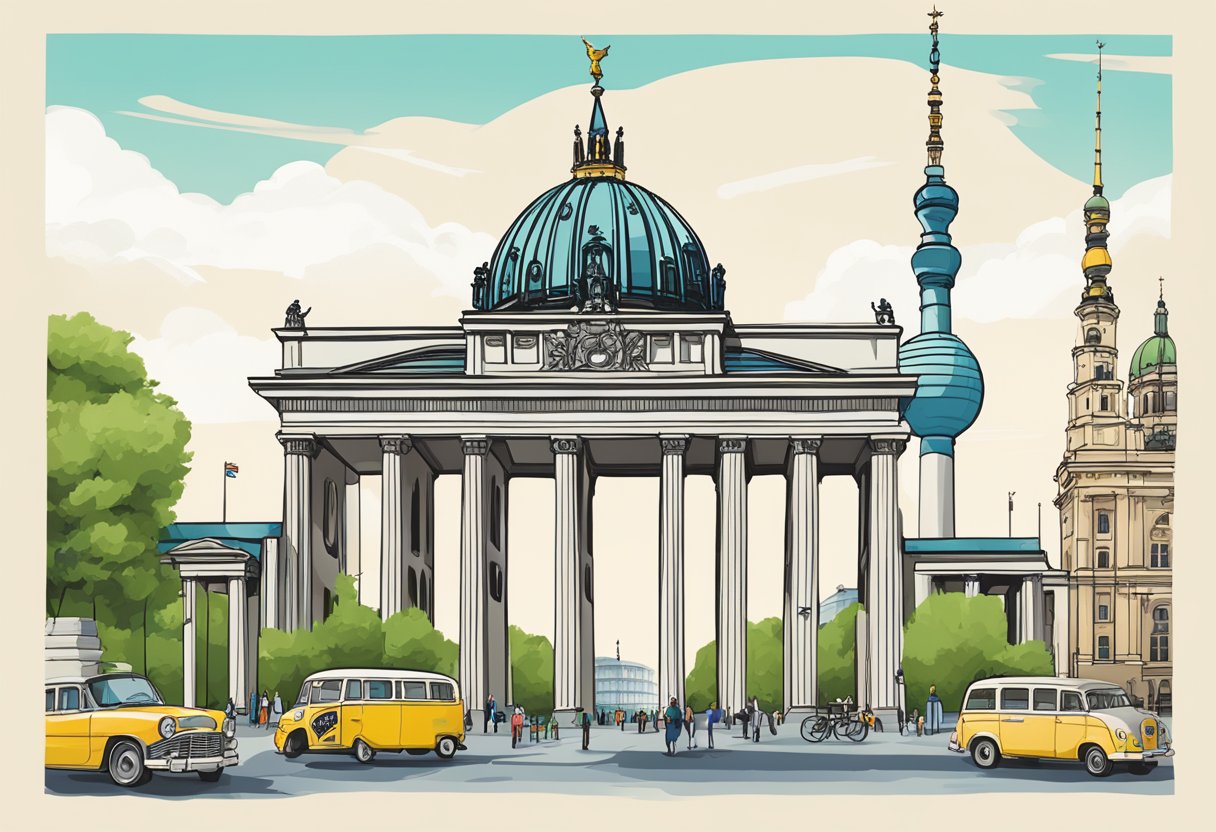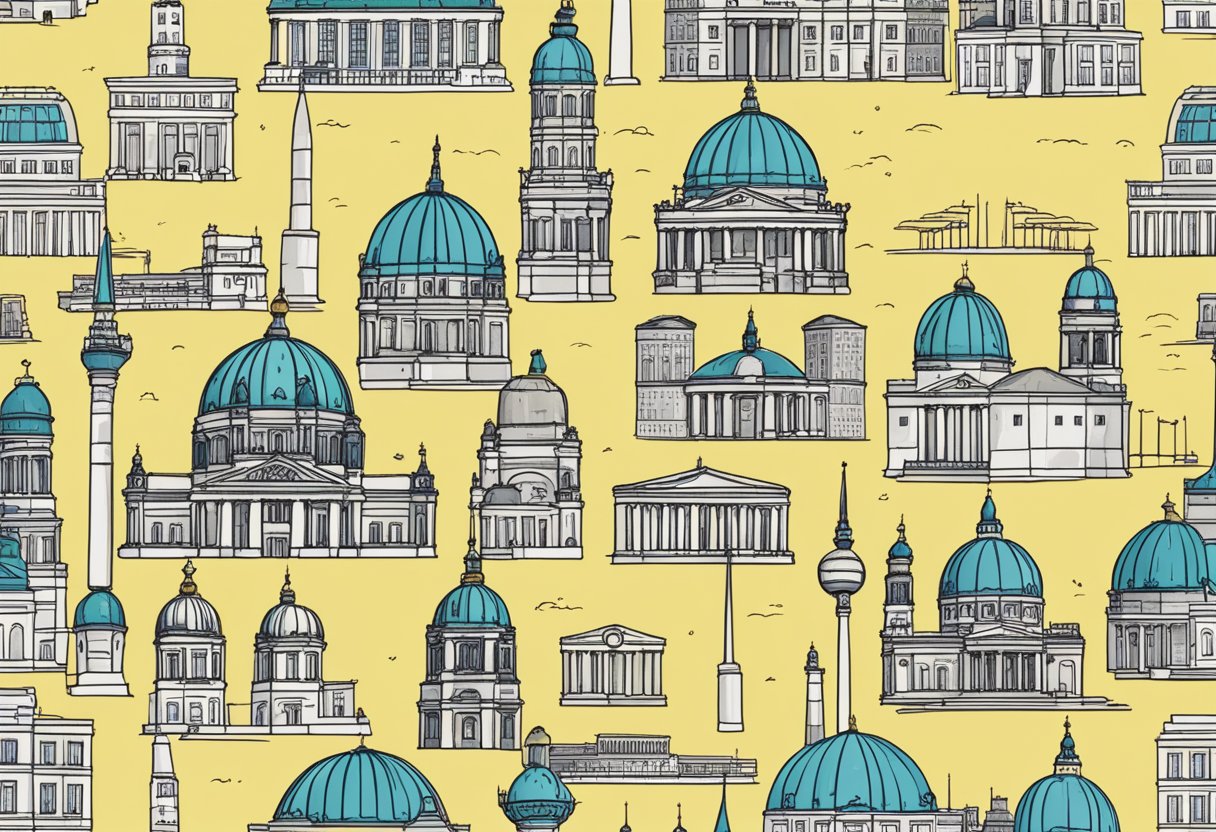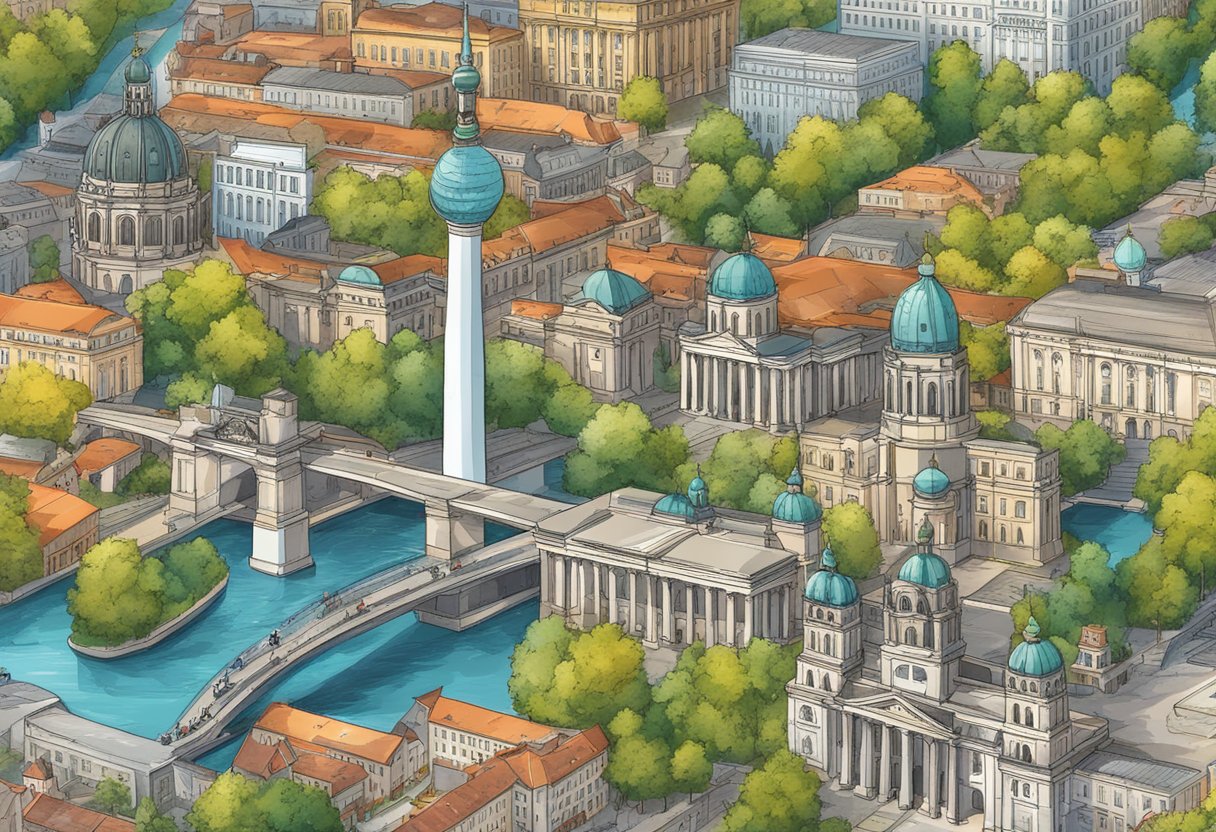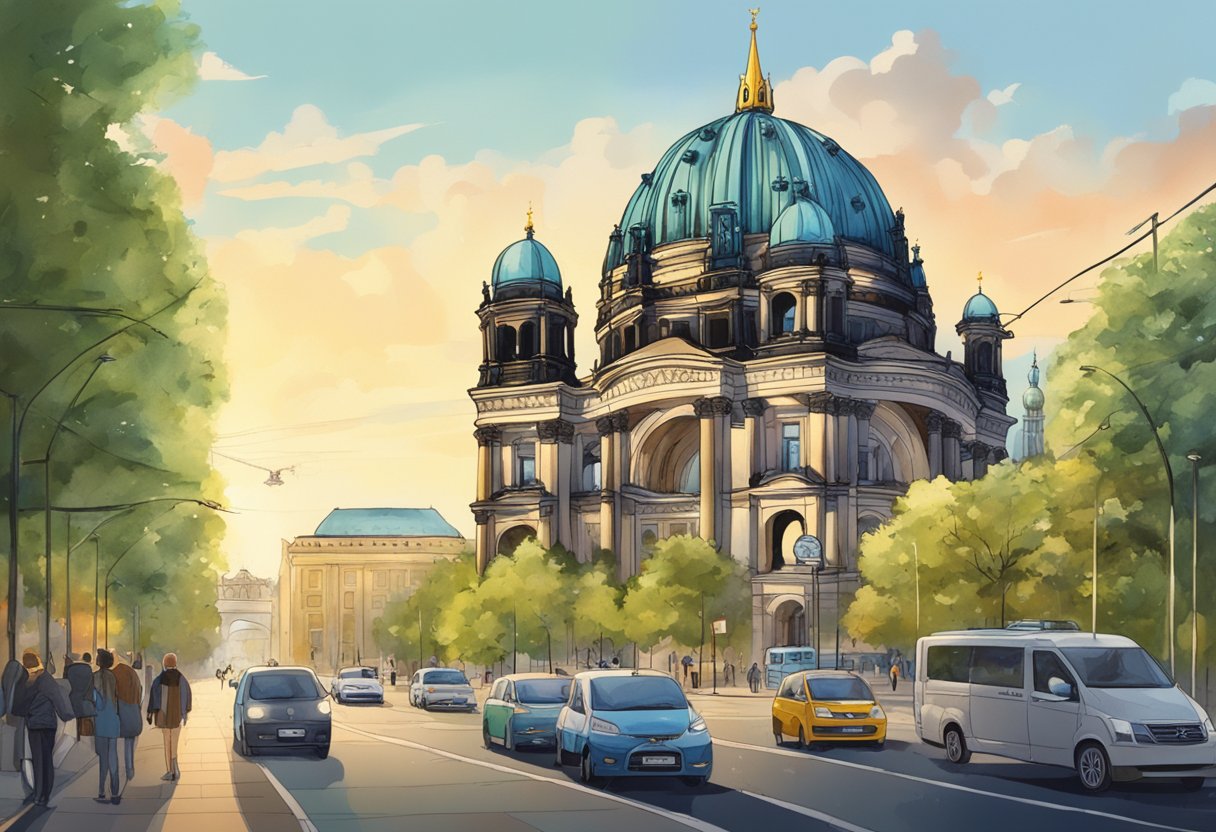A Comprehensive Guide to Its Distinct Features
You might be wondering: What Makes Berlin So Unique? Well, you have come to the right place.
Berlin, a city known for its rich history and vibrant culture, holds a special charm that draws millions of visitors each year.
As you explore the city, you’ll quickly come to appreciate how its past and present seamlessly blend, giving rise to an unparalleled ambiance that sets it apart from other European capitals.
With a multitude of experiences at your fingertips, unraveling the unique aspects of Berlin is a journey worth embarking on.


Key Takeaways
- Berlin captivates visitors with its historical significance and cultural diversity
- Marvel at the city’s architectural wonders and wide range of attractions
- Embrace the spirit of innovation and rebellion that defines Berlin’s character
Historical Significance


World War II
Berlin holds a significant place in world history due to its role in World War II.
As the capital of Nazi Germany, it was the center of the regime’s political and military operations.
The city suffered immense destruction during the war, particularly in the Battle of Berlin in 1945.
Cold War
After WWII, Berlin became a symbol of the ideological divide between the East and the West during the Cold War.
The city was split into East Berlin, controlled by the Soviet Union, and West Berlin, governed by the Allies – the United States, the United Kingdom, and France.
Berlin Wall
The most poignant symbol of this division was the Berlin Wall, built in 1961.
It physically separated East and West Berlin, preventing people from crossing freely and deepening the divide between the two sides.
The Wall fell in 1989, marking the beginning of the end of the Cold War.
Prussia
Berlin’s history dates back even further. It was the capital of the Kingdom of Prussia from 1701, playing a crucial role in European politics. Under the reign of Frederick the Great, Prussia became a powerful military force, driving political and cultural changes in Berlin and beyond.
Reunification
The fall of the Berlin Wall and the subsequent reunification of East and West Germany in 1990 marked a new chapter in the city’s history.
Berlin was once again the capital of a united Germany, and its unique blend of historical events continues to shape its present-day identity.
Cultural Haven


Art Scene
Berlin is home to a vibrant art scene, with countless galleries and exhibitions showcasing contemporary and traditional works.
A major highlight is the city’s street art that portrays its urban landscape’s soul.
You’ll find murals and graffiti on buildings, under bridges, and along the famous East Side Gallery.
Music and Theatre
The city boasts a rich variety of music and theatre, ranging from classical performances to contemporary shows.
Berlin’s philharmonic orchestra and opera houses host musical events, while numerous independent theaters continue to push boundaries.
Food and Culinary Traditions
Berlin’s diverse food scene reflects its multicultural population. You’ll encounter everything from traditional German dishes to international cuisine.
A local favorite is the iconic currywurst, served in food stalls across the city, while trendy neighborhoods like Kreuzberg offer an eclectic mix of culinary delights.
Diversity and Multiculturalism
Berlin thrives on its diversity, which brings together people from various backgrounds and cultures.
This fusion enriches the city’s atmosphere, ultimately encapsulating its unique charm.
Embrace Berlin’s global tapestry, as it’s the very essence of what sets it apart from other cities.
Architectural Marvels


Museum Island
Museum Island is a must-visit destination for art and history enthusiasts. This UNESCO World Heritage site is home to five world-renowned museums, each offering a unique perspective on German and European history.
As you stroll through the lush gardens and magnificent buildings, you’ll find yourself immersed in centuries of artistic and cultural heritage.
Reichstag
The iconic Reichstag building represents Berlin’s tumultuous history and resilient spirit. Housing the German Parliament, this historic structure underwent extensive renovations in the late 20th century, including a stunning glass dome designed by Sir Norman Foster.
When visiting the Reichstag, don’t miss the opportunity to explore this dome, which offers a unique vantage point to admire Berlin’s landscape.
Brandenburg Gate
The Brandenburg Gate is a symbol of unity and a powerful reminder of the city’s past.
As one of the most important landmarks in Berlin, it served as a gateway between East and West Germany during the Cold War.
Today, this impressive Neoclassical monument stands as an emblem of Berlin’s rich history and hopeful future.
TV Tower
Dominating the city skyline, the TV Tower at Alexanderplatz soars 368 meters high, making it the tallest structure in Germany.
This iconic tower not only serves as a broadcasting facility but also offers an observation deck and a rotating restaurant.
Ascending to the top, you’ll be rewarded with breathtaking panoramic views of Berlin.
As you explore these architectural marvels, you’ll discover the unique essence of Berlin and appreciate how the city’s historic and contemporary structures mesh together in a harmonious blend.
Experiences and Attractions in Berlin


Berlin offers a range of unique experiences and attractions that you won’t find anywhere else.
In this section, we’ll explore some of the highlights that make Berlin so special, including:
- The East Side Gallery
- Zoological Garden
- DDR Museum
- Urban Exploration
- The River Spree
East Side Gallery
The East Side Gallery is the longest remaining stretch of the Berlin Wall, transformed into a vibrant outdoor gallery.
It features over 100 street art paintings from artists all around the world.
As you stroll along the 1316-meter-long wall, you’ll witness a unique blend of history and creativity.
Zoological Garden
The Zoological Garden is not only Germany’s oldest zoo but also one of the most biodiverse in the world.
With over 20,000 animals, representing around 1,300 species, it offers an incredible close-up experience with wildlife.
The spacious aviary, fascinating reptile house, and impressive predator house are just a few of the attractions you can explore.
DDR Museum
Get a taste of life in East Germany at the DDR Museum.
This interactive museum transports you back in time, providing a firsthand glimpse into the daily lives and experiences of people living under the East German regime.
From original living room setups to a Trabant car, you’ll gain insight into a period of history that still influences Berlin today.
Urban Exploration
As a city that constantly reinvents itself, Berlin is full of hidden gems and unique locations to discover.
Urban Exploration allows you to dive deep into the city’s graffiti scene, abandoned buildings, and off-the-beaten-path attractions.
A popular option is Vibes of Berlin tour, which offers an up-close experience of Berlin’s alternative side.
River Spree
Finally, exploring Berlin would not be complete without a visit to the River Spree.
The waterway winds through the city, providing a unique perspective on the landscape and sights.
One of the must-visits along the river is the Badeschiff, a floating pool and recreational area open from May to September.
Whether you’re on a relaxing boat tour or walking along its banks, the River Spree showcases the convergence of Berlin’s history, culture, and urban development.
Innovation and Rebellion


Urban Planning
Berlin stands as a symbol of innovation and rebellion.
The city’s unique urban planning showcases its ability to merge history with modernity.
Here, you’ll find exceptional examples of architectural diversity, and witness the transformation that has occurred over the years.
The boldness in urban planning is evident in Berlin’s progressive green spaces, bike-friendly streets, and culturally rich neighborhoods, all of which create an impressive urban landscape.
Innovation Districts
In addition to its rebellious character, Berlin is renowned for its thriving innovation districts.
These hubs of technology, art, and entrepreneurship foster creativity and cutting-edge ideas.
You can explore areas like the Factory Berlin, a flagship institution for innovation, where start-ups, artists, and established companies come together to collaborate and shape the future.
The German capital also hosts renowned accelerators and incubators, contributing to the city’s status as a top destination for innovation and forward-thinking ideas.
Let Berlin’s unique blend of history, innovation, and rebellion inspire you as you experience the spirit of this one-of-a-kind city.
Frequently Asked Questions


Why is Berlin a popular tourist destination?
Berlin is a favorite destination because of its rich history, world-class museums, and vibrant nightlife. Tourists are drawn to its unique blend of culture, street art, and architecture that appeals to various interests. Additionally, its extensive public transportation system helps visitors easily explore the city and take in its many attractions.
What sets Berlin apart from other European capitals?
Berlin is a city built on the foundations of both its rich and turbulent history, creating a distinctive atmosphere.
While other capitals are defined by their iconic landmarks, Berlin is shaped by the numerous historic and cultural influences it has experienced throughout time.
This has led to a unique blend of old and new, as well as an atmosphere of resilience and constant evolution.
How does Berlin’s history contribute to its uniqueness?
Berlin’s prominent role in German and global history has created an unparalleled urban landscape.
Its origins trace back to the 13th century when it was an insignificant fishing village.
Over time, the city became the capital of various empires including Brandenburg, Prussia, and the German Empire.
Berlin’s history continued to evolve with the rise of the Nazis, the division of the city by the Berlin Wall, and eventually reunification – all of which have left a profound impact on the city’s identity.
What are some unique cultural aspects of Berlin?
The cultural scene in Berlin is diverse and vibrant, thanks to a combination of history and contemporary creativity.
From world-renowned theaters and opera houses to underground clubs and alternative art spaces, Berlin provides a wide range of experiences for every taste.
Moreover, the city is a melting pot of international influences, which are visible in its food scene, thought-provoking street art, and the multitude of languages heard on the streets.
What role does the Berlin Wall play in its identity?
The Berlin Wall was a key symbol of the Cold War and the division of Germany, and its remnants continue to shape Berlin’s identity even today.
The fall of the wall marked a pivotal moment not only for the city but for the world.
Although most of it has been demolished, sections like the East Side Gallery have been preserved as a reminder of the past and a testament to Berlin’s resilience.
Meanwhile, the space between the parallel walls, once a no man’s land with a thriving rabbit population, has transformed into a lively urban landscape.
How do Berlin’s diverse neighborhoods shape its character?
Each of Berlin’s neighborhoods has its own distinct personality, providing a variety of experiences within one city.
From the historical charm of Mitte to the vibrant energy of Kreuzberg, these diverse neighborhoods offer unique perspectives into the city’s character.
As framey.io highlights, you can experience a rich tapestry of cultures, architectural styles, and atmospheres simply by venturing from one district to another, contributing to Berlin’s allure and individuality.
More interesting articles around the world can be found at our homepage

